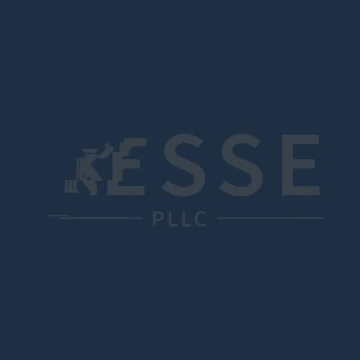On October 13, 2023, the U.S. Securities and Exchange Commission (SEC) voted to adopt Rule
10c-1a under the U.S. Securities Exchange Act of 1934 (Exchange Act), which, according to the
SEC, is intended to increase transparency and efficiency of the securities lending market. Rule
10c-1a will become effective on January 2, 2024. We delve into the specifics of the rule in this
alert.
The SEC also adopted Rule 13f-2 under the Exchange Act, which is intended to increase the
public availability of short sale related data. We cover the specifics of Rule 13f-2 in a separate
blog post on this website.
Background
Securities lending is the market practice by which securities are temporarily transferred from a
securities lender to a securities borrower for a fee. A securities loan is typically a fully
collateralized transaction. Securities lenders are generally large institutional investors such as
investment companies, central banks, sovereign wealth funds, pension funds, endowments,
and insurance companies. Securities lending tends to be an important income-enhancing
strategy with minimal or controlled risk.
Securities lending and borrowing transactions are traditionally conducted on a bilateral basis.
Usually, when an end investor wishes to borrow securities, it may obtain a loan from its broker
or dealer from the broker’s or dealer’s inventory or through customer margin accounts, or the
broker or dealer will borrow the securities from a lending agent with whom it has a relationship
and will then re-lend the securities to its customer. Loans from lending programs to brokers or
dealers occur in what is commonly referred to as the “wholesale market,” while loans from a
broker or dealer to the end borrower occur in what is commonly referred to as the “customer
market” or the “retail market.” Obtaining a securities loan often involves an extensive search
for counterparties by brokers or dealers.
Currently, securities lending data are produced by commercial data vendors, and are based on
voluntary data contributions, either using a “give-to-get” model or from customer market
surveys.
Believing the available data to be inadequate, the SEC voted to adopt Rule 10c-1a on October 13,
2023, in an effort to increase transparency and efficiency of the securities lending market. We
dive into the specifics of Rule 10c-1a below.
Specifics of Rule 10c-1a
General
Rule 10c-1a requires “covered persons” to provide certain securities loan information (Rule
10c-1a Information) to a registered national securities association (RNSA) in the format and
manner required by an RNSA, within specified time periods. The rule also requires any covered
person that agrees to a “covered securities loan” to comply with the rule.
For purposes of the rule, a “covered person” is (i) any person that agrees to a covered securities
loan on behalf of a lender, (ii) any person that agrees to a covered securities loan as a lender
when an intermediary is not used, unless the borrower is a broker or dealer borrowing fully
paid or excess margin securities, or (iii) a broker or dealer when borrowing fully paid or excess
margin securities. A clearing agency providing only the functions of a central counterparty or a
central securities depository in connection with a covered securities loan does not have to
provide Rule 10c-1a Information for the covered securities loan to an RNSA.
A “covered securities loan” is a transaction in which any person on behalf of itself or one or
more other persons, lends a “reportable security” to another person. The use of margin
securities by a broker or dealer is not a covered securities loan for purposes of Rule 10c-1a,
unless the broker or dealer lends such margin securities to another person. A “reportable
security” is any security or class of an issuer’s securities for which information is reported or
required to be reported to the consolidated audit trail as required by Rule 613 under the
Exchange Act and the CAT NMS Plan, the Financial Industry Regulatory Authority’s Trade
Reporting and Compliance Engine, the Municipal Securities Rulemaking Board’s Real-Time
Transaction Reporting System, or any reporting system that replaces any of the foregoing
systems.
Reporting Obligation
Where an intermediary agrees to a covered securities loan on behalf of the lender, the
intermediary has the obligation to provide the Rule 10c-1a Information to an RNSA.
If an intermediary is not used, the lender is required to provide Rule 10c-1a information to an
RNSA. If a covered securities loan consists of a broker or dealer borrowing fully paid or excess
margin securities, only the broker or dealer is required to provide the Rule 10c-1a Information
to an RNSA, not the lender.
A covered person may rely on a reporting agent that is a broker, dealer, or registered clearing
agency to provide Rule 10c-1a Information to an RNSA to fulfill the covered person’s reporting
obligations, provided that the covered person must enter into a written agreement with the
reporting agent pursuant to which the reporting agent agrees to provide the Rule 10c-1a
Information to an RNSA, and the covered person must provide such reporting agent with timely
access to such information. Assuming the existence of such agreement, if the reporting agent
receives the Rule 10c-1a Information from the covered person on a timely basis, the reporting
agent assumes responsibility for compliance with the reporting requirements under Rule 10c-
1a.
Information Required to Be Reported
Rule 10c-1a requires the reporting of three types of data.
The first type relates to the material terms of the covered securities and must be provided to an
RNSA by the end of the day of which the covered securities loan is effected.
The second type of data concerns modifications to a covered securities loan and must be
provided to an RNSA by the end of the day on which a covered securities loan is modified, if the
modification occurs after other information about the covered securities loan has already been
provided to an RNSA, and results in a change to such information.
The third type of data concerns confidential information in connection with a covered securities
loan and must be provided to an RNSA by the end of the day on which a covered securities loan
is effected. Such third type of information must be kept confidential by the RNSA, subject to
applicable law.
Obligations of an RNSA
An RNSA is required to make the Rule 10c-1a Information available to the SEC, or other persons
as the SEC may designate by order upon a demonstrated regulatory need.
Rule 10c-1a also requires an RNSA to make the following information publicly available no later
than the morning of the business day after the covered securities loan is effected:
(i) the unique identifier assigned to a covered securities loan by an RNSA and the security
identifier;
(ii) the material terms of the covered securities, except for the loan amount; and
(iii) information pertaining to the aggregate transaction activity and the distribution of rates
among loans and lenders for each reportable security and related unique identifier.
The RSNA must make the loan amount of the covered securities publicly available on the 20th
business day after the covered securities loan is effected, along with loan and security
identifying information.
In addition, an RNSA is required to make publicly available (i) any modification to the material
terms of the covered securities, except for modification to the loan amount, no later than the
morning of the business day after the covered securities loan is modified, and (ii) modifications
to the loan amount on the 20 th business day after the loan amount is modified along with loan
and security identifying information.
Rule 10c-1a requires an RNSA to implement rules regarding the format and manner of its
collection of information and make such information publicly available. The rule also requires
an RNSA to maintain the collected information on its website or a similar means of electronic
distribution, without use restrictions, for a period of at least five years. RNSAs are permitted to
establish and collect reasonable fees in accordance with SEC rules.
Effective Date and Compliance Dates
Rule 10c-1a will become effective on January 2, 2024 (Effective Date).
Covered persons are required to report Rule 10c-1a Information to an RNSA starting on the first
business day 24 months after the Effective Date (Reporting Date).
RNSAs are required to publicly report Rule 10c-1a Information within 90 calendar days of the
Reporting Date.
Contact Information
The foregoing is intended to be a summary of Rule 10c-1a and does not contain all the
information you need regarding Rule 10c-1a. If you have questions regarding Rule 10c-1a,
please contact Kelvin Kesse via e-mail at kelvinkesse@kessepllc.com or via phone at 346-348-0239.
About Kesse PLLC
Kesse PLLC focuses on securities, capital markets, SEC reporting, corporate governance and
general corporate law. We regularly advise clients on public and private securities offerings and have
significant experience with U.S. domestic, U.S.-Canadian cross-border, and other foreign private
issuer offerings. We assist clients with private placements, initial public offerings (IPOs), direct
listings, follow-on/secondary offerings, registered direct offerings, initial coin offerings (ICOs), special
purpose acquisition company (SPAC) formations, IPOs and business combinations (deSPACs),
tender offers, all aspects of corporate governance matters, SEC reporting and compliance, and stock
exchange initial and additional listing and on-going compliance. We also assist clients with other
corporate matters, including business formation, maintenance and compliance, contract drafting and
review, corporate administrative services, and corporate and/or transaction opinions, among others.
Disclaimer
This website and its contents may be considered attorney advertising under the rules of certain
jurisdictions.


